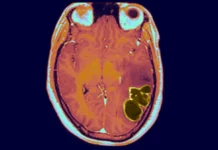The Enigma of Candida Auris: A Lethal Fungus Creeping into Hospitals
Candida Auris: A Pernicious Foe
Candida auris, an insidious and potentially fatal fungus, is creeping into hospitals, posing a grave threat to humans. This tenacious organism thrives in warm-blooded hosts and defies numerous anti-fungal drugs, spreading at an alarming pace. Between 2020 and 2021, isolated incidents tripled in the United States, endangering the already ill and immunocompromised.
Canada’s Struggle Against the Fungus
As of March 22, Canada has reported 43 cases, with 19 identified in the past three years. The Public Health Agency of Canada warns of dire consequences for the healthcare system as the fungus’s ability to spread could strain resources significantly.
Unraveling the Myriad of Fungi
The fungal kingdom is an extensive, unique group of organisms that encompasses everything from yeast for bread and beer to molds and mildews affecting crops. Although fungi share more biological similarities with humans than bacteria, developing a drug that eradicates fungi without harming humans proves elusive.
Candida Auris: A Mysterious Origin and Invasive Infections
In 2009, researchers in Japan first identified candida auris—a yeast capable of wreaking havoc on the blood, heart, central nervous system, eyes, bones, and internal organs. When disseminated throughout the body, it can lead to catastrophic organ failure.
This formidable organism colonizes human skin and has been discovered on hospital surfaces, where it can linger for up to a month.
Who is at Risk?
Primarily, candida auris preys on those with compromised immune systems and patients in hospitals with devices such as ventilators and catheters. The majority of US outbreaks have transpired in long-term care facilities, although hospitals have also seen outbreaks amid the pandemic.
Heightened Alarm
The infiltration of candida auris into hospital systems and long-term care facilities has complicated treatment. Despite the number of reported cases remaining relatively low, its lethal potential is alarming. Detection and treatment methods require improvement to combat this burgeoning issue.
The Global Emergence of Candida Auris
Intriguingly, candida auris surfaced almost simultaneously worldwide after its initial report in 2009. One theory suggests that rising global temperatures have enabled the fungus to adapt to warmer environments, presenting new opportunities for human infection.
The absence of concerted effort and investment in discovering novel anti-fungal drugs exacerbates the growing problem.
The Call to Action
Society must prioritize infectious diseases as much as chronic illnesses, such as diabetes and cancer. Vaccine and antibiotic complacency has rendered humans vulnerable to evolving organisms. Staying ahead of these pathogens is vital to prevent situations like the current candida auris spread.
Thwarting Candida Auris: A Multi-Pronged Approach
Heightened surveillance and detection methods are essential for identifying and containing candida auris outbreaks. While medical laboratories possess the necessary tools, long-term care facilities might overlook the fungus until an outbreak occurs. Routine screening may become indispensable as cases multiply.
Healthcare facilities must enforce strict infection control measures, including proper hand hygiene, thorough cleaning and disinfection of surfaces and equipment, and appropriate personal protective equipment (PPE) use. Identifying and isolating infected patients can further minimize transmission risks.
Investing in research and development is paramount to discovering new anti-fungal drugs and therapies. The emergence of drug-resistant strains like candida auris necessitates exploring novel treatment options to combat infections effectively.
Raising awareness about candida auris among healthcare professionals and the public is critical. This includes educating people about risk factors, symptoms, and prevention measures associated with the fungus. Increased awareness ensures individuals take necessary precautions and seek timely medical attention if infection is suspected.
Candida auris’s spread is a worldwide issue, warranting international collaboration. Sharing information, resources, and research findings among countries can accelerate the development of new treatments and strategies to prevent the fungus’s spread. Coordinated global efforts are indispensable in addressing the growing threat posed by candida auris.
In conclusion, the rise of candida auris demands urgent attention and a multifaceted approach to mitigate its impact. By enhancing surveillance and detection, implementing infection control measures, investing in research and development, raising awareness, and fostering international collaboration, we can better safeguard vulnerable populations and curb the further spread of this deadly fungus.








